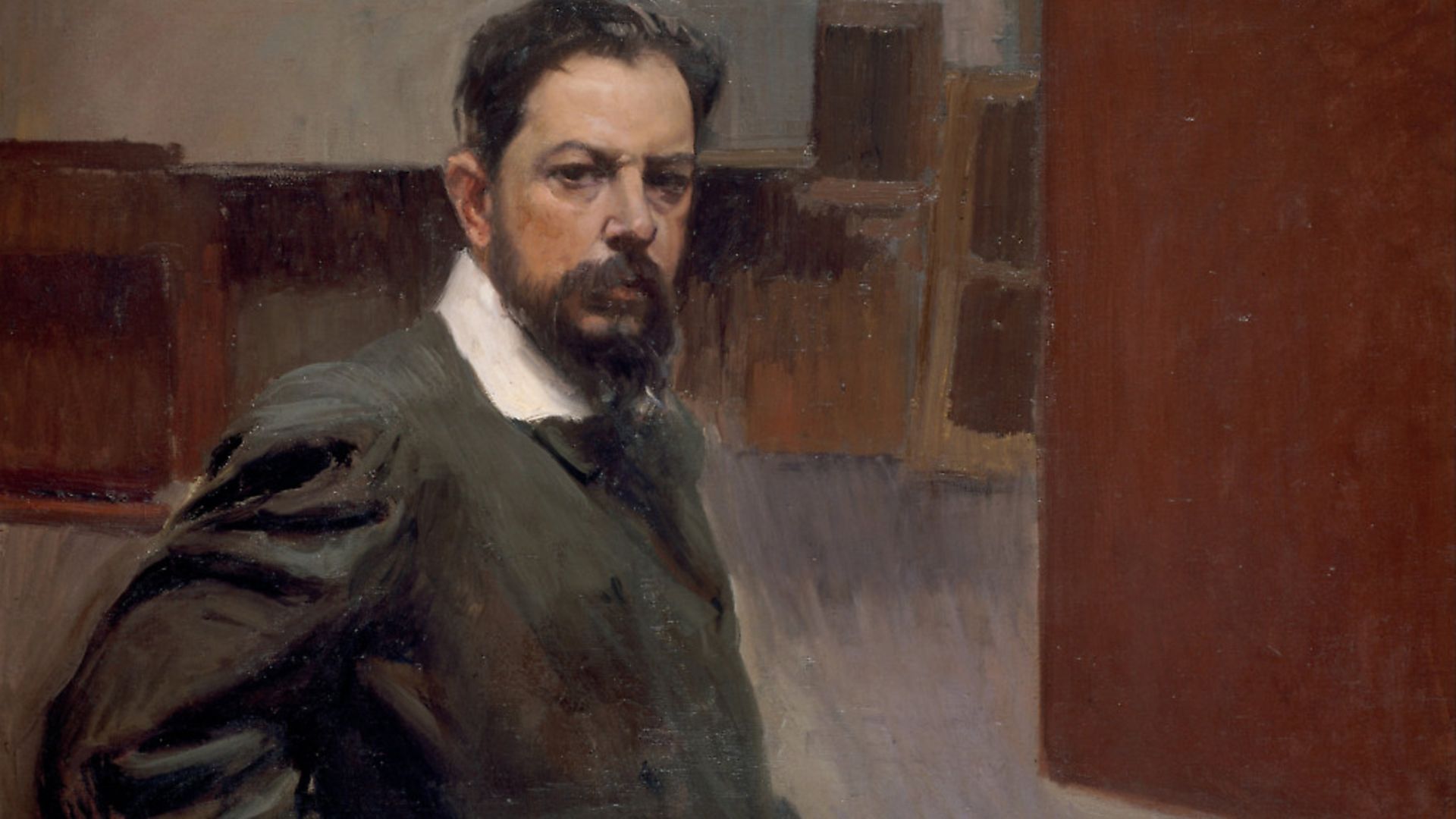
His 1908 debut in London flopped spectacularly, but a new exhibition of work by Spanish painter Sorolla is certain to get a better reception. Claudia Pritchard reports.
The children stare firmly out of the picture like any family holding still for posterity. The two little girls are in Sunday-best red dresses; the solemn boy seems aware that he will be one day be the sole male heir to an important man. But the image is not a photograph; rather, it is a triple portrait painted by Joaquin Sorolla y Bastida, one time photographer’s assistant turned painter, proud father-of-three and, briefly, international art star.
Joaquin junior, Maria and Elena are arranged in My Children (1904) in homage to Sorolla’s idol Velázquez and to the complex composition of the master’s snapshot of family life in the court of Philip IV, Las Meninas.
Maria’s ill health was, in time, to take the family away from the humidity of Valencia to the drier air of Madrid – and to proximity with the works of the Spanish master at the capital’s Museo del Prado.
Sorolla’s admiration for Velázquez went back to his own early training and lasted until his death at 60, references to the master showing in his colour palette, compositions and portraiture, in particular. Sorolla: Spanish Master of Light at the National Gallery, the artist’s first British solo exhibition in more than a century, aims to show that Sorolla bridges a gap between the great masters who influenced him and the young turks of the 20th century.
Born in Valencia in 1863, Sorolla was brought up by an aunt and uncle after the early death of his parents during a cholera outbreak. Showing promise as an artist at school, he bought exemption from military service and took a studio above a photographer’s, assisting him and then, in 1888, marrying his daughter, Clotilde. But first came extensive travels – to influential Madrid, where he copied works by Velázquez, to Rome, Pisa, Florence, Venice, Naples and Assisi.
By the time of his marriage to Clotilde, his constant muse, he had made his first sales, and a succession of prizes was crowned by the Grand Prix at Exposition Universelle in Paris in 1900. The prize acknowledged his whole body of work but above all his Sad Inheritance, a vast canvas on loan to London from Valencia’s Colección Fundación Bancaja. In the painting, orphans, imperfect and abandoned children take to the water.
The emergence of turn-of-the-century social conscience made this picture and other depictions of the poor and disadvantaged both fashionable and socially relevant.
The bright white light of the Mediterranean coastline to the west of Valencia’s old town had attracted Sorolla to a district where fashionable society and a hard-pressed fishing community existed side by side.
To the south, elegant, well-heeled families took to the beach buttoned up in full daywear; to the north, in the Cabañal, boys swam naked and men brought in the catch from boats simply rigged in the vela romana style, a single spar supporting a fat, loosened sail.
Oxen hauled the fishing fleet to shore, a scene depicted in The Return from Fishing (1894), also on loan to the exhibition. But in the hard-hitting, bitterly named And They Still Say Fish is Expensive! (1894) – its title taken from the last line of the influential novel Flor de Mayo by Sorolla’s friend and neighbour Vicente Blasco Ibáñez – the haul has cost a man his life. The religious token worn by fishermen hangs uselessly from his stone-white corpse.
The Grand Prix was the calling card that opened the doors to exhibitions across Europe, and with several successes behind him, in 1908 Sorolla headed for London and the Grafton Galleries. Here there was a rare setback: he sent more than 500 works and sold only around 50.
The promise on the publicity posters of work by ‘The world’s greatest living painter’ failed to grab the British imagination – or collectors.
The London show did, however, impress American philanthropist Archer Milton Huntington. Within a year Sorolla was showing in New York, where Huntington commissioned a 70-metre frieze for the Hispanic Society on 155th Street.
This series of scenes of Spanish life, sketches for which are in the exhibition, illustrate both regional traditions and also the diversity of the nation’s roots and current population. Spanishness for Sorolla and intellectuals of the period was not homogeneity, but the capacity to support several languages, many traditions and constantly evolving ideas, principals which chimed with those of American thinkers.
Success in New York more than made up for the failure in London, and exhibitions followed across the States. The now internationally recognised Sorolla could, to an extent, relax into his mature years with decorative beach scenes and fetching portraits. The rustle of silk replaced the keening of bereft fishermen’s families, in scenes dominated by pert parasols and gowns lifted fetchingly by the sea breeze, while across the Pyrenees in Paris, fellow Spanish-born artist Pablo Picasso and his French soulmate Georges Braque were hauling each other up the slopes of Cubism to the mountain-top of modernism. Nonetheless, Picasso would have been aware of Sorolla, says co-curator of the National Gallery exhibition Akemi Herraez Vossbrink.
On his first visit to Britain in 1900, Sorolla had made a pilgrimage to Rokeby Park in County Durham to see for himself Velázquez’s The Toilet of Venus, which he would have known from reproductions. Shortly after the first viewing, Clotilde found herself reclining for a sumptuous study of creamy silks and sensuous curves that has clear allusions to Velázquez’ masterpiece. For respectability, she turns her face away, and inspects her wedding ring.
This intimate Female Nude (1902) comes to London on loan from Sorolla’s comfortable home and garden in Madrid, designed by the artist in 1909/10, at the height of his success, and today preserved intact with his artefacts, many of them votive objects, noticeably long brushes, and even the portrait he was working on when he had his first stroke, in 1920. Open to visitors, the house has extensive studios, now used as gallery space.
The outbreak of the First World War curtailed Sorolla’s international travels, but its ending did not propel him into bleaker work, as it did many of his contemporaries. For the brief years of peace before the illness from which he never recovered, he searched harder and deeper for ways to put onto canvas the penetrating light of his seaside years. Like the magnesium flash of early photography, it burns white hot into unashamedly decorative scenes. All but unknown 111 years after his London flop, Sorolla’s moment in the sun may have come.
Sorolla: Spanish Master of Light is at the National Gallery, London, from March 18 to July 7








